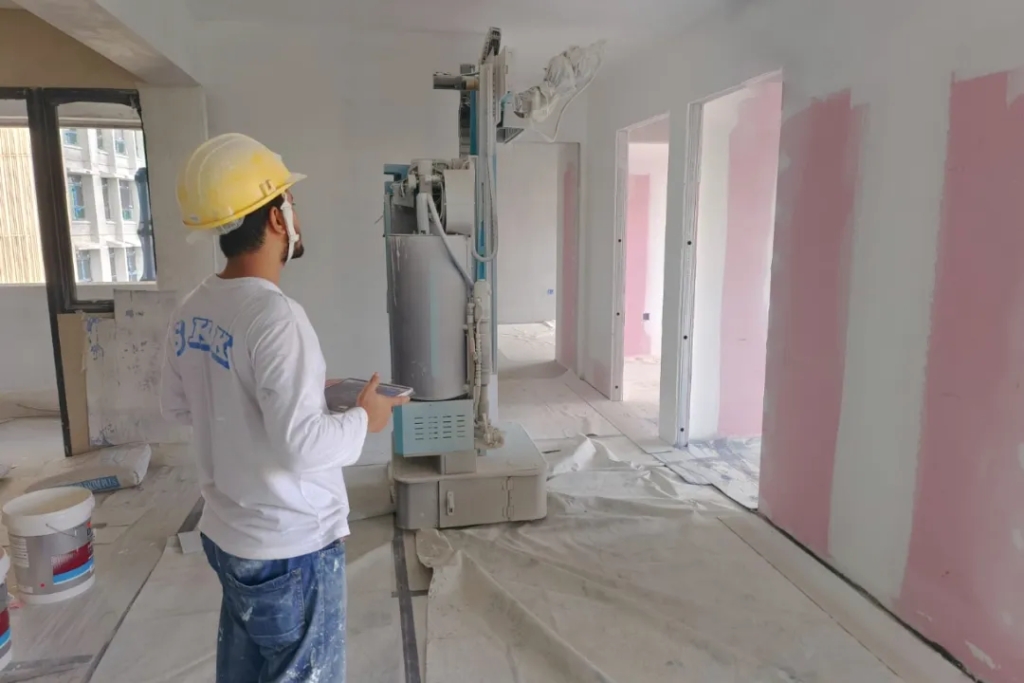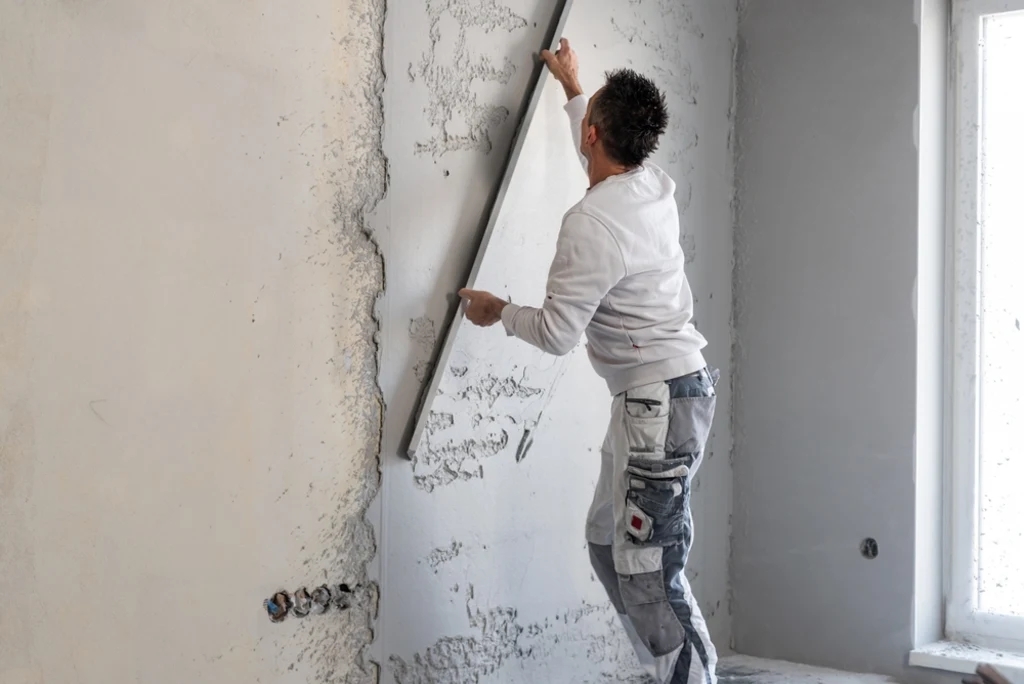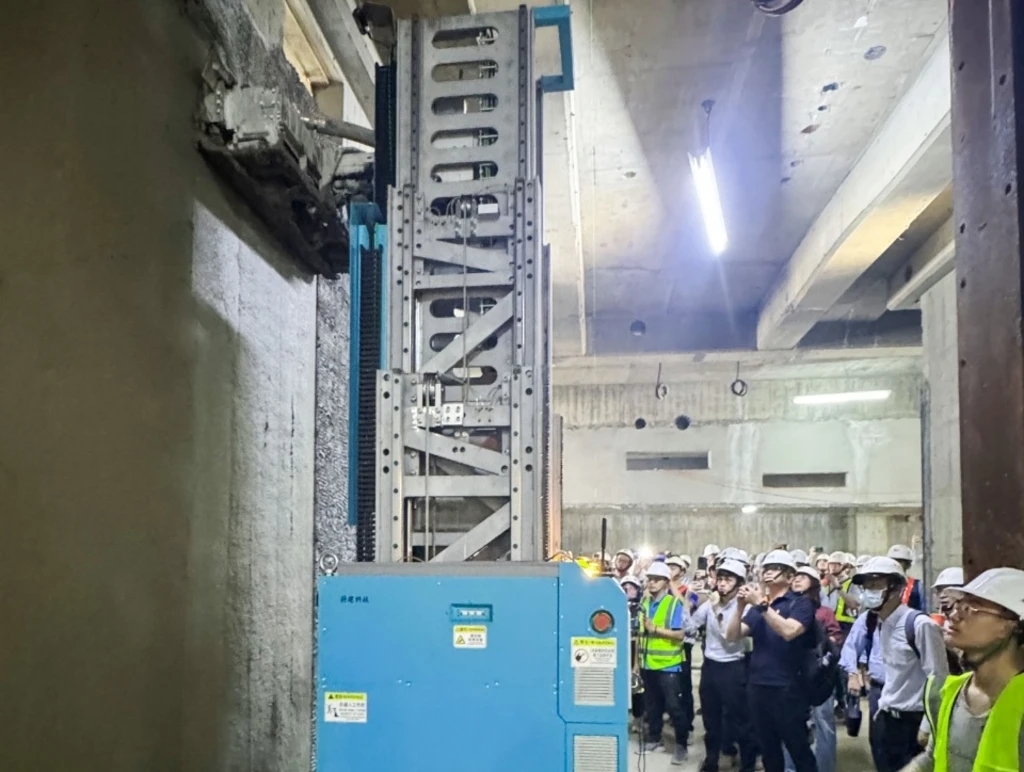Faster, safer, stronger: The human + robot future of construction
Tech in Asia: If you think about the cities of the future, what comes to mind? Flying cars and trains? Lab-grown food? Buildings that look more like space ships? Whatever your vision may be, someone has to build it – but will they be human or robot?
That question is valid even now as robots are rapidly becoming mainstays of the construction industry. In fact, the global construction robotics space is on track to grow to US$774.6 million by 2032, driven by breakthroughs in AI, data processing, and sensors.
Additionally, these robots aren't just doing “dirty, dangerous, and difficult” jobs like lifting heavy building materials or drilling and demolition, but they're also increasingly being used to tackle more detail-oriented jobs like plastering or painting.

Weibuild's painting robot in action / Photo credit: Weibuild
“Before, robots were very seldom mentioned as a construction solution,” says Frank Mao, co-founder and CTO at construction robotics company Weibuild. “But as the technology has developed and become more cost-competitive, people began to see just how helpful they can be.”
Two questions
In 2020, when Weibuild was founded in Shanghai, its aim was to develop intelligent construction solutions to solve the industry's biggest challenges. It quickly realized it was ahead of the curve in the segment.
“Back when we were first starting out, almost no one was talking about construction robots; they were more focused on prefabricated structures,” says Mao.

Frank Mao, co-founder and CTO at Weibuild / Photo credit: Weibuild
The firm also encountered a fair amount of skepticism on the viability of its solution, but the company knew that it had a path forward if it could answer two crucial questions:
Which construction tasks are repetitive, time-consuming, and hazardous to humans?
How can robotics technology address them in a way that's actually more productive or cost-efficient?
“We started visiting sites and factories to ask construction workers where they were struggling, before moving on to study the cost of implementing these robots,” recalls Mao.
Five years later, Weibuild has developed a range of construction robots capable of tasks such as plastering, painting, and steel rebar machining and has expanded its footprint beyond China to encompass operations in Hong Kong and Singapore.
“Singapore's interest in construction robots has grown in recent years, so I wanted to introduce what Weibuild has done to the industry here,” says Mao.
Better, faster, stronger
Central to the promise of construction robots is their ability to take over building tasks and do them more efficiently and at a much lower cost.
According to Mao, plastering in particular is set to reap some of the biggest benefits of automation because of how labor-intensive and expensive the work is.

Plastering is a physical demanding task / Photo credit: Sabrewolf / Shutterstock
If a worker is plastering the whole day, which typically involves a lot of manual labor and working at awkward angles, “they can injure their backs or legs, which could impact the quality of their work as well,” he explains.
Construction robots are also essential to mitigate safety issues, such as falls from scaffolding or exposure to toxic fumes while painting in enclosed spaces.
“Even if they open the doors and windows for airflow, or wear masks, it's still a very confined space,” Mao says. “Our spraying robots can cover up to 95% of the painting area, so humans just need to set up the planning and data mapping for the robots and maybe do some touch-ups at the end.”
Click on the stars to learn more about how robots can help with construction.
Rethinking rebar
More than the decorative aspects of construction, Weibuild also focuses on the foundational building materials of modern infrastructure, such as rebar. Rebar are essential for construction projects, as they're used to reinforce concrete structures.
“With traditional means of machining rebar, there were a lot of tasks that were dangerous, time-consuming, and unproductive,” shares Mao. “A 12 meter-long piece of rebar could weigh more than 120 kilograms, so you'd need at least two or three people to lift it, not just once a day but many times throughout the day.”
By leveraging AI and robotics, Weibuild fully automates the entire rebar production line, from cutting, tapping, bending, all the way up to final delivery and assembly. The system is also highly flexible, capable of retooling machining processes without any human intervention.
“Let's say you want to change the requirement of rebar bend” says Mao. “Doing it in the traditional way would require you to totally retool the machine manually. With robots and AI, everything gets adjusted automatically.”
Weibuild's intelligent rebar machining system is also capable of producing rebar that's customized to any design, so it cuts across construction types – whether for a residential condominium or a mixed-use commercial space.
“Compared to standard machines, we're not just automatic but more intelligent, more flexible, and more adaptive,” says Mao.
Man + robot
As robots come to play an increasingly central role in our lives, it's natural to wonder if this is just the first stage of a dystopian future.
Mao doesn't think so, stressing that robots are enhancers for human ingenuity, not substitutes.
“Robots are not perfect,” he says. “In any construction process, we will still need people to work on sites – but in a different way.”
For instance, humans can focus on more valuable work such as planning and strategizing.

Weibuild's plastering robot in action / Photo credit: Weibuild
Crucially, construction robots can help address the segment's persistent skill shortages by providing a source of capable labor.
“It's now hard to find people who are under the age of 40 to do things like plastering. When the current generation of people retire, there will be an even bigger gap,” says Mao.
“With robots, construction workers won't have to spend years just learning one skill but can instead operate the robots who become your plastering or painting workers, who are more productive and can do multiple jobs in a more sustainable way,” he says.
By providing a friendlier working place that's more profitable and provides more benefits, the industry can also encourage the participation of more young people.
All that said, there are still obstacles to overcome.
“It will take some time to build up the infrastructure to further automate construction,” says Mao. “But we're at a turning point now because AI and digital are coming together very quickly, so they'll start learning on their own.”
At the moment, adoption of construction robots is still slow, but the technology is steadily gaining ground. As the technology becomes more mature, reliable, and cost-effective, there will be more trust from the industry and governments.
“And once they understand just how much robots can do, they'll understand and embrace them.”
The IMDA Spark Programme aims to address the key challenges and support the growth of promising Singapore-based infocomm and media startups by providing selected government tools as well as creating a vibrant, collaborative ecosystem and network.
If your startup is looking to tap into the opportunities the city-state holds, learn more about what the Spark Programme can do for you on its website.
JOIN IMDA SPARK
Weibuild is committed to the original development of construction robotics and intelligent products, striving to enhance safety, quality, and overall efficiency for the construction industry. Learn more about Weibuild here.












